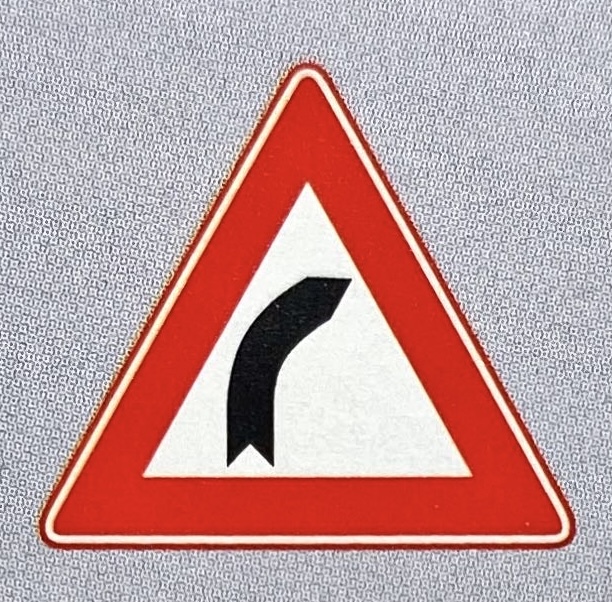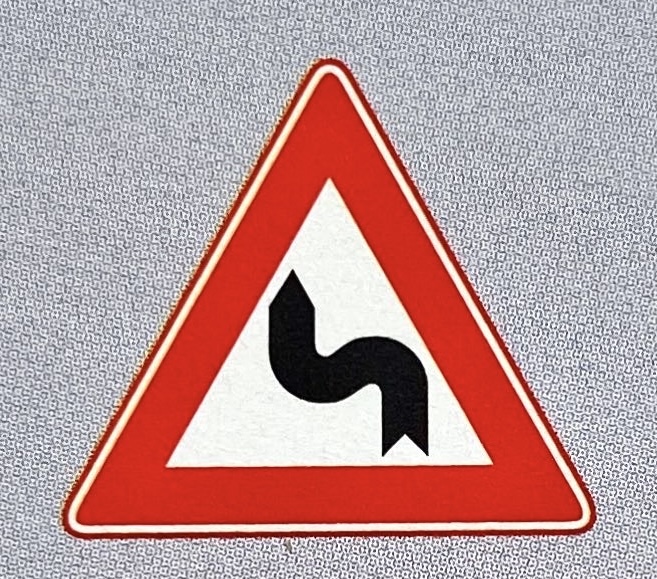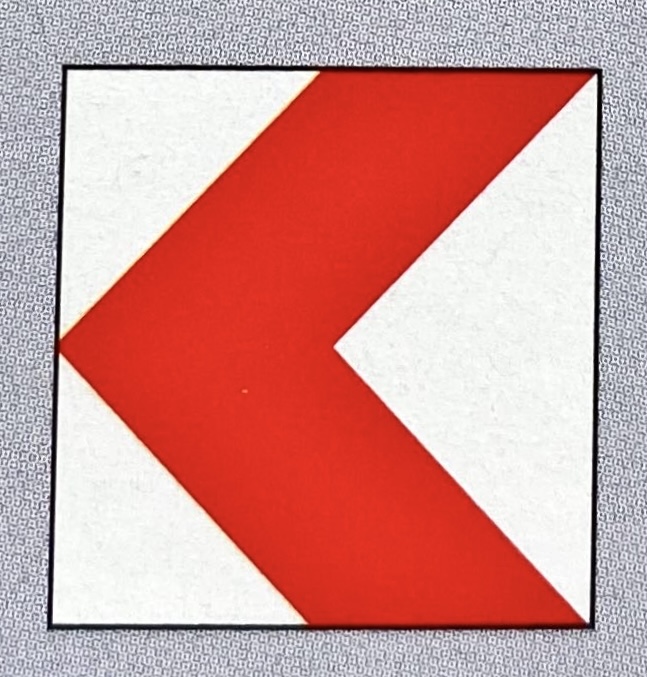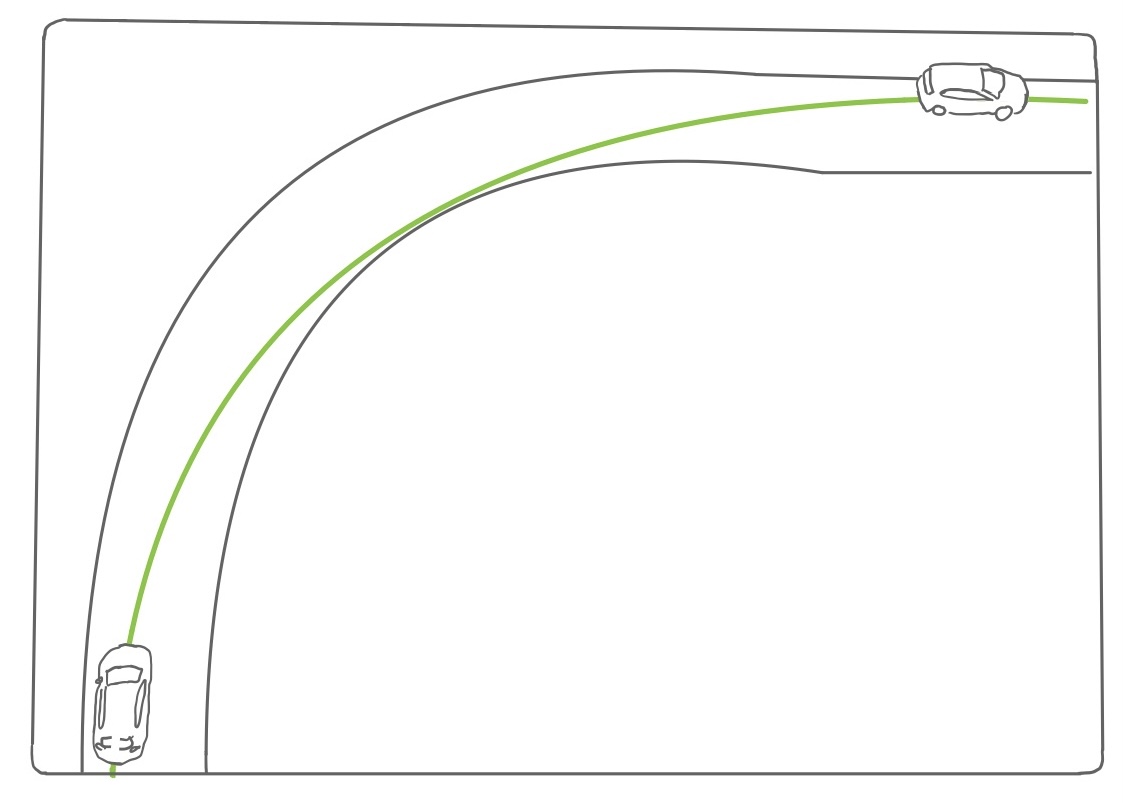Dutch: bocht.
Also translated as bend and curve.
How do you drive safely through every curve, and what is the effect of road camber on centrifugal force?
While driving you come across all kinds of different turns. From gentle curves to very sharp ones. Sometimes there are even two turns in a row or the curve you are driving in becomes increasingly sharp. Read here how to drive safely through any type of bend.
A curve to the right:

An S curve: first turns to the left, then to the right.

Left turn incoming:

1) Watch and assess
While driving, alternate looking at the traffic signals, the situation right in front of you and ‘scanning’ your environment further away.
This way you know in time whether to expect a bend. The lines on the road, a row of trees, a sign or a curve shield can also indicate an approaching curve. 👀
View of the curve
In order to properly assess a curve, it is important that you can see it.
A curve is clear if, before entering it, you:
- see traffic and any obstacles in the curve;
- assess the condition of the road surface;
- see the course and end of the curve.
Is the curve you are approaching unclear? Then pay extra attention to your speed. This way you can respond better to any obstacles or unexpected situations.
Viewing behavior in the curve
Once turning, keep looking carefully into the curve.
Focus on the point you are going to (the end of the turn).
2) Adjust speed
In many corners you have to slow down to avoid drifting off course. This has everything to do with the centrifugal force and the grip of your tires on the road surface.
3) Steering and adjusting

By driving as far to the left of your lane as possible, you maintain maximum visibility through the curve and can take the curve as broadly as possible. This approach helps you to be less affected by centrifugal force.
Besides observing and timely adjusting your speed, proficient steering helps you navigate curves safely.
Choose the optimal driving line for each curve.
- In a gentle curve, it’s advisable to stay in the middle of your lane and smoothly follow the curve.
- A sharp curve, experiencing greater centrifugal force, requires a wider approach. For a sharp right curve, start from as far left in your lane as possible. Conversely, for a sharp left curve, begin from the far right.
Once you exit the curve and your wheels are aligned straight, you can then safely increase your speed.